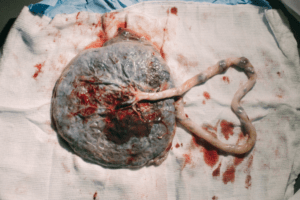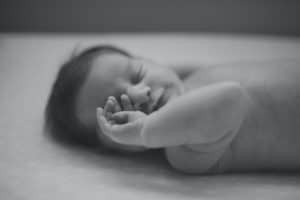
In China, new practises are in place that follow the modern medical norm, however there are still many Chinese families that follow the traditional birthing methods, that have been part of their culture for centuries.
In Chinese culture, the balancing on the Yin and the Yang is very important in all aspects of their life. To help to keep them balanced during pregnancy, Chinese women take several measures to ensure they give birth to a happy and healthy baby. As soon as they discover they are pregnant, women are discouraged from any form of work, as they believe that any movement of the babies’ position could cause injury to the baby and mother. Expectant mothers are also discouraged from looking at anything that would be deemed unpleasant, or saying anything negative, and are instead made to look at beautiful and positive things to pass this energy onto the baby.
While pregnant, Chinese women are also encouraged to eat cold foods, as they believe pregnancy is a ‘hot’ condition, and that eating cold food will maintain the balance of Yin and Yang. Different cultures within China have differing beliefs on which foods are best – for example Cantonese women do not consume mutton, as in Cantonese it has the same pronunciation as ‘epilepsy’. Whereas pregnant Hokkien women in South-East China do not eat crabs, as they believe this will cause the baby to be badly behaved.
Chinese parents also use the Chinese gender chart, that is allegedly over 90% accurate. The chart is said to have been found over 700 years ago in a Royal Tomb, and predicts the babies gender based on the moment the baby was conceived and the age of the mother. When the mother delivers her first child, her mother is present but does not attend the birth of any siblings that may come along and although very difficult, the Chinese believe that being as quiet as possible during labour will keep away the evil spirits that screaming can bring. The father is not expected to attend the birth, but is expected to give the baby its first bath.
After the safe delivery of the baby, the mother will then begin a ‘sitting month’, which over recent years, has become affectionately known as ‘30 days in pyjamas’ by more modern Chinese parents. The mother will be expected to rest and not do any work including housework and is put on a strict diet of foods thought to help her body recover. She is encouraged not to wash as this could make her likely to catch a cold, and should not comb her hair to prevent headaches. She must also wear layers of warm clothing during this month, whatever the weather, as they believe this will stop the mother from catching a cold and means she will not suffer from joint pain in later life. Massage is also part of traditional Chinese childcare and mothers will massage their new born to improve bone structure, enhancing limb coordination, and help them gain weight. The 30 day confinement is also considered as a full-moon or ‘man yue’ period for the new arrival, who will now be introduced to friends and family. Many families also choose this day to celebrate their childs’ birthday.
Please comment below if you have any other interesting facts about Chinese birthing traditions. We’d love to hear them!
Photo credit @chubbychinesebaby on Instagram







I am researching different cultural practices, ancient and modern, throughout the world, on ante- and post -natal practices. In particular, i am interested to find out if pelvic floor exercises were/are taught in China.
If so, how are they taught and assessed.
Hi there, I’m so sorry for the very late reply. I am also sorry as I can’t help you with your question. I hope you have already found your answer though:-)